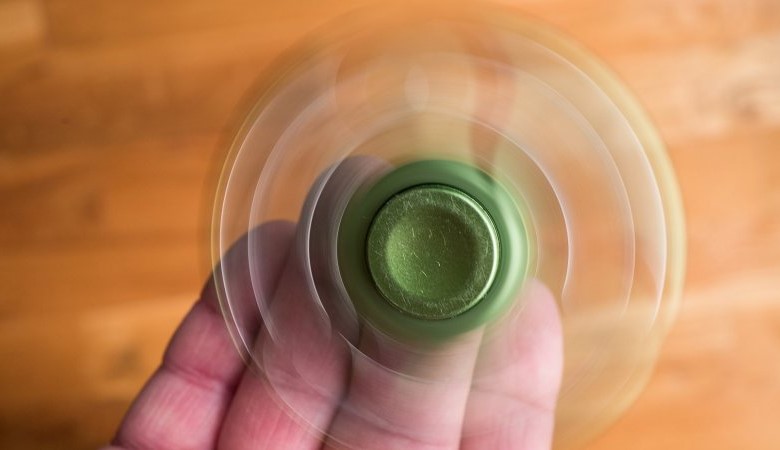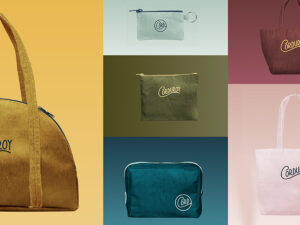
INC: “The fidget spinners trend took over the U.S. as some experience love: quickly, deeply, and very unexpectedly. And just like love, nobody can pinpoint when it started.
The origins of the must-have toy of 2017 are dubious. Some publications, like The New York Times, The Guardian, and Time, credit Catherine Hettinger as the inventor. Inc.com, too, wrote a piece that ascribed the spinner’s invention to Hettinger. The Tulsa-born woman filed for a patent of a “spinning toy” in 1993, which lapsed in 2005 because she couldn’t afford to pay the fees.
Recently, however, Bloomberg tasked two patent lawyers to examine Hettinger’s expired patent. According to their report, her invention has nothing in common with the fidget spinners you see (everywhere) today, which are typically three pronged and come in all different shapes and materials. If you look at Hettinger’s Kickstarter campaign for her “classic spinner,” you’ll notice that the prototype looks more like a hatted Frisbee than the toys tormenting teachers in U.S. classrooms.
That’s on purpose, she tells Inc. “The product that we have, I feel, is designed more for children, so I feel better about putting my name on that–the ‘Hettinger spinner’ or whatever and getting that out,” she says. With 10 days to go, however, her campaign is still about $9,000 short of her goal.
Regardless of who actually invented the toy, the fidget spinner has spawned its own economy, which has grown exponentially in recent months. As such, it deserves some unraveling.
Spinners, by the numbers
On Amazon, there are roughly 8,284 sellers. On eBay and Alibaba, there are more than 3,300 vendors, offering about 600,000 spinners. The craze has even crossed the digital frontier, as fidget spinner apps creep up the top downloads charts.
Amid the $51 billion toy industry, the actual size of the fidget spinning market has been hard to judge. Most of its vendors are small and scattered. However, the ubiquity of the toy, which is supposedly used as a tool to promote concentration among children with autism spectrum disorders, has been undeniable. Some estimates suggest that more than 200 million spinners have shipped to retailers.
Analysts like Jonah Koenigseker, a research associate at Euromonitor International, anticipate the white-hot toy will be downright glowing over the holidays. “Fidget spinners could be the top stocking stuffer in 2017,” he says.
High-end hobby
Among those already cashing in is Paul DeHerrera, CEO of MD Engineering. The Suquamish, Washington-based startup sells a premium fidget spinner dubbed Torqbar. It was created by MD Engineering’s co-founder, Scott McCoskery, in 2015.
McCoskery got the idea, he says, after realizing his co-workers frowned upon his pen-clicking habit during meetings. Inspired by Peter Atwood’s pocket-size pry tools made out of high-end metals, McCoskery started tinkering to create a toy that doesn’t “need a lot of space” and “keeps your hands busy.”
The self-declared physics buff opted for a weighted bar decked out with low-bearing balls that allowed it to spin for a long time. He started marketing them on Facebook Groups in September 2015. Overwhelmed by the demand, he launched a GoFundMe campaign a month later, to finance a bigger machine that could increase his production run. He fell far short of his goal, however, only managing to secure $4,000 of his $15,000 target.
The Torqbar–which comes in copper, gold, or gray and is made from brass, titanium, and stainless steel–picked up momentum after McCoskery tapped DeHerrera to join the company. At the time, DeHerrera was working as a senior systems engineer.
“Paul has taken over sales and marketing and PR,” says McCoskery. “The business side of it is pretty overwhelming. I just want to get back to innovating.”
The product gained so much notoriety, his co-founder de Herrera explains, that it landed an online feature in Forbes, where it was christened the “iPhone of desk toys.” According to the December 2016 article, people were paying as much as $400 on eBay, double Torqbar’s retail price, for a single spinner. Typically, spinners retail for $5 to $10 apiece.
“We’re north of a million dollars in sales in less than one year,” says DeHerrera, who offers the high-end spinner directly to consumers through the Torqbar website. It’s also worth pointing out that an identical, cheaper version of the Torqbar is currently Amazon’s best-selling toy.
Physics experiment
Cooper Weiss and Allan Maman have similarly enjoyed the spinner boom. The teenagers from Armonk, New York, were inspired to launch their own fidget spinner by Antsy Labs’ Fidget Cube. That company’s August 2016 Kickstarter campaign went viral and blew past its $15,000 goal in less than a day, ultimately raising more than $6.4 million by the end of its campaign. But its October ship date was delayed, over and over–with product finally shipping in late December 2016 and early January 2017.
Too impatient to wait, the 17-year-old Maman persuaded his physics teacher to let him make a couple of spinners on the school’s 3-D printer. It worked. He shared the business opportunity with Weiss, a classmate and friend. Together, they co-founded Fidget 360, which makes a spinning device under the same name. The high school friends kept using the school’s 3-D printer and started selling the spinners to students. They earned a couple thousand dollars before the school threatened to suspend them for using school property.
It didn’t matter, however. Now they had enough money to buy their own 3-D printer. Plus, after testing the market, they were eager to start selling their spinners online.
Fidget 360 launched first on Instagram in October 2016, where a $15 influencer “shout out” ad transformed into $2,000 in sales in a matter of days. Now Weiss and Maman have more than 160,000 followers on Instagram, five employees, and a manufacturing facility in New York City.
“We were the first ones to start mass producing them and start advertising them across social media,” says Maman.
Unwinding the trend
Still, he and Weiss see the trend loosing steam. While they foresee a spike for the back-to-school season and maybe for Christmas, overall they say the craze is leveling off. They explained it in terms of sales. “Back in February, we were making maybe $5,000 or $6,000 a day. Now we’re averaging between $1,000 and $2,000,” says Maman.
Koenigseker from Euromonitor agrees that the spinners are, well, sputtering. “The fad itself will probably last 12 to 18 months, peaking during Christmas season 2017,” he says. “To gain market share, brands will look to lower prices.”
Even so, DeHerrera from MD Engineering isn’t convinced a slow down is in the cards. “If you look at things like yo-yos and Hula-Hoops, they spiked in a fad fashion and were very popular, but you can go to a Walmart and find a yo-yo. We want to be that brand in a few years,” says DeHerrera, who quickly added that the Torqbar will continue to be high-end.”




